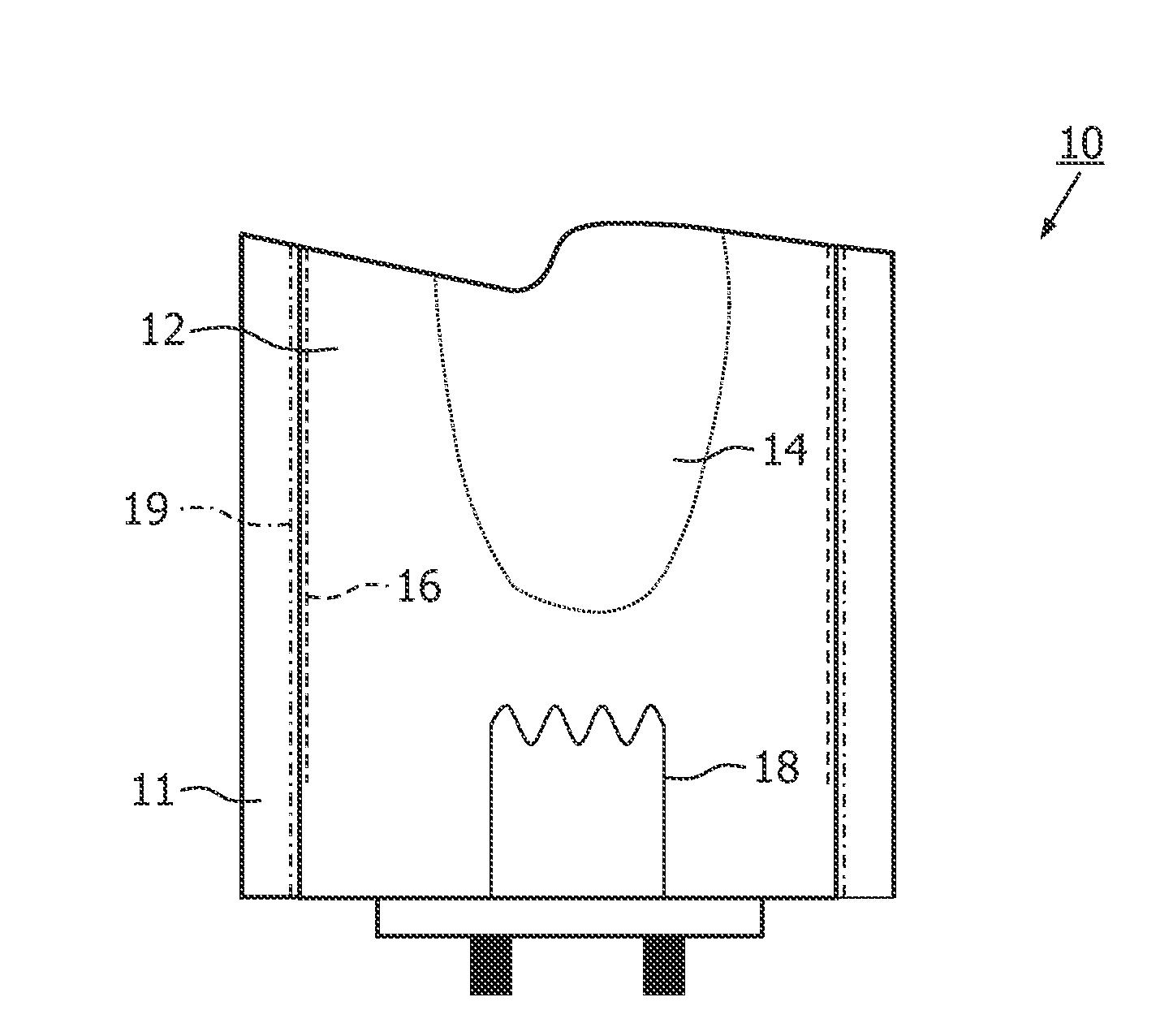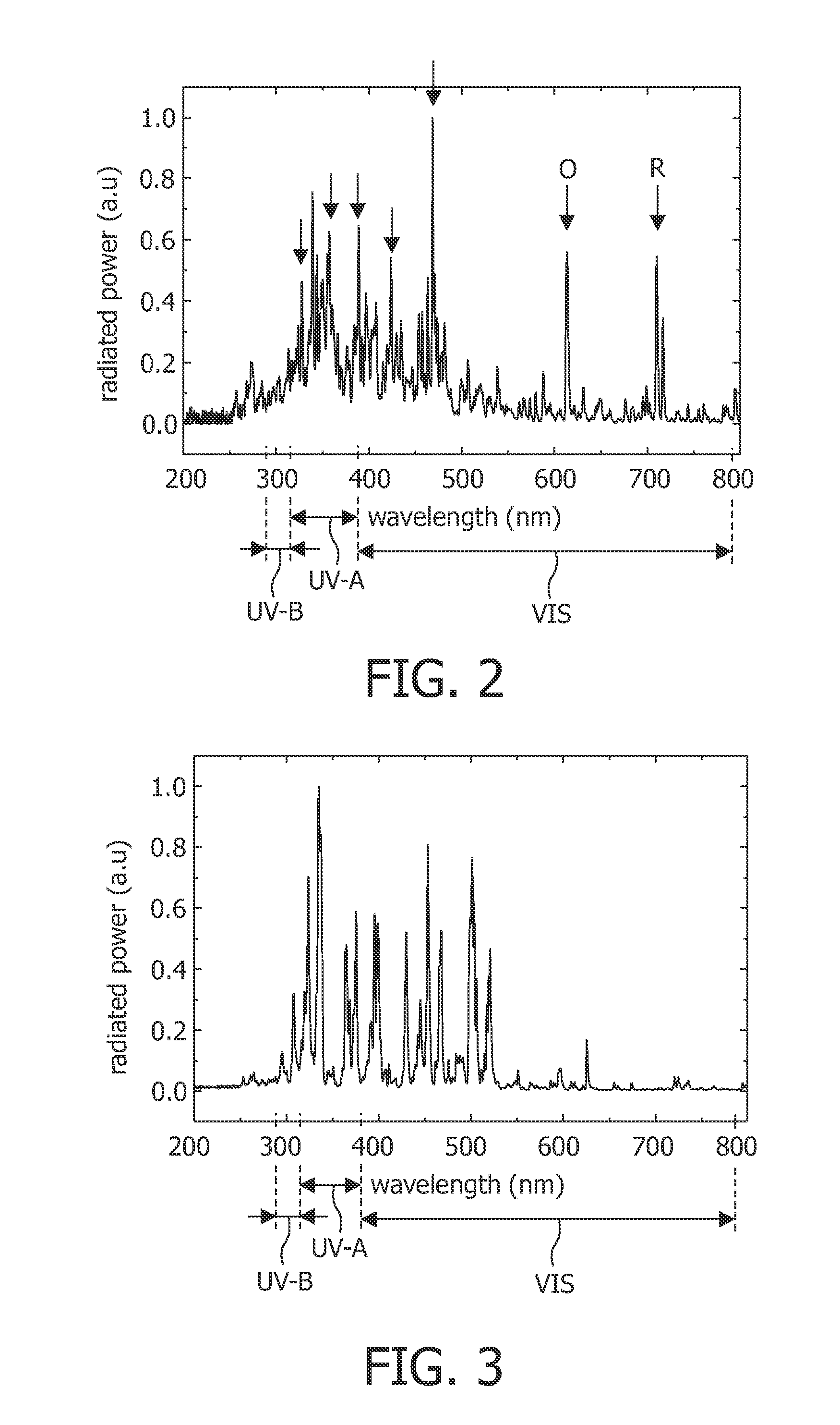Low-pressure gas discharge lamp having improved efficiency
a efficiency-enhancing technology, which is applied in the direction of low-pressure discharge lamps, discharge tube luminescnet screens, discharge tube main electrodes, etc., can solve the problems of reducing the efficiency of the known reducing the efficiency of low-pressure mercury vapor discharge lamps, and limited life of luminescent materials used to generate uv-a and uv-b. , to achieve the effect of improving efficiency
- Summary
- Abstract
- Description
- Claims
- Application Information
AI Technical Summary
Benefits of technology
Problems solved by technology
Method used
Image
Examples
Embodiment Construction
[0030]FIGS. 1A and 1B show a cross-sectional view of a low-pressure gas discharge lamp 10, 20 according to the invention. The low-pressure gas discharge lamp 10, 20 according to the invention comprises a light transmitting discharge vessel 12, 22 which encloses a discharge space 14, 24 in a gastight manner. The discharge space 14, 24 comprises a gas filling, for example, comprising a metal compound and a buffer gas. The low-pressure gas discharge lamp 10, 20 further comprises coupling elements 18, 28. The coupling elements, for example, couple energy into the discharge space 14, 24 via capacitive coupling, inductive coupling, microwave coupling, or via electrodes to obtain a gas discharge in the discharge space 14, 24.
[0031]In an embodiment shown in FIG. 1A the discharge elements 18 are a set of electrodes 18. In FIG. 1A only one electrode 18 of the set of electrodes 18 is shown. The electrodes 18 are electrical connections through the discharge vessel 12 of the low-pressure gas dis...
PUM
 Login to View More
Login to View More Abstract
Description
Claims
Application Information
 Login to View More
Login to View More - R&D
- Intellectual Property
- Life Sciences
- Materials
- Tech Scout
- Unparalleled Data Quality
- Higher Quality Content
- 60% Fewer Hallucinations
Browse by: Latest US Patents, China's latest patents, Technical Efficacy Thesaurus, Application Domain, Technology Topic, Popular Technical Reports.
© 2025 PatSnap. All rights reserved.Legal|Privacy policy|Modern Slavery Act Transparency Statement|Sitemap|About US| Contact US: help@patsnap.com



